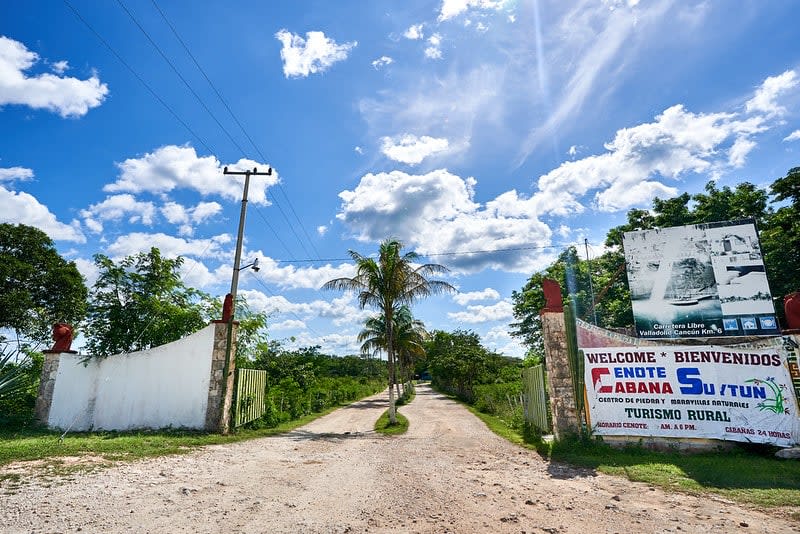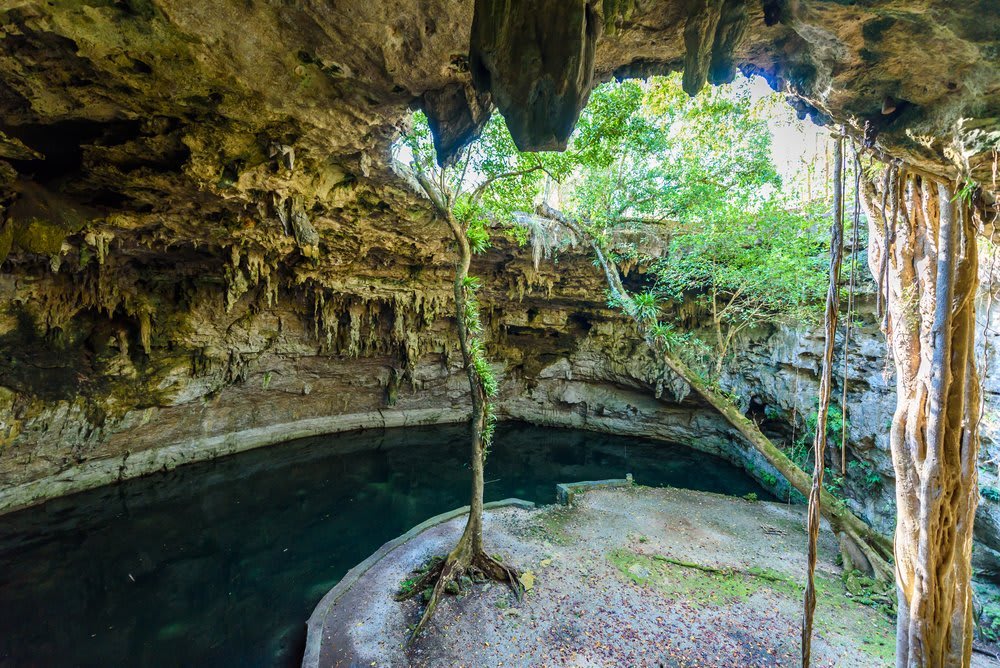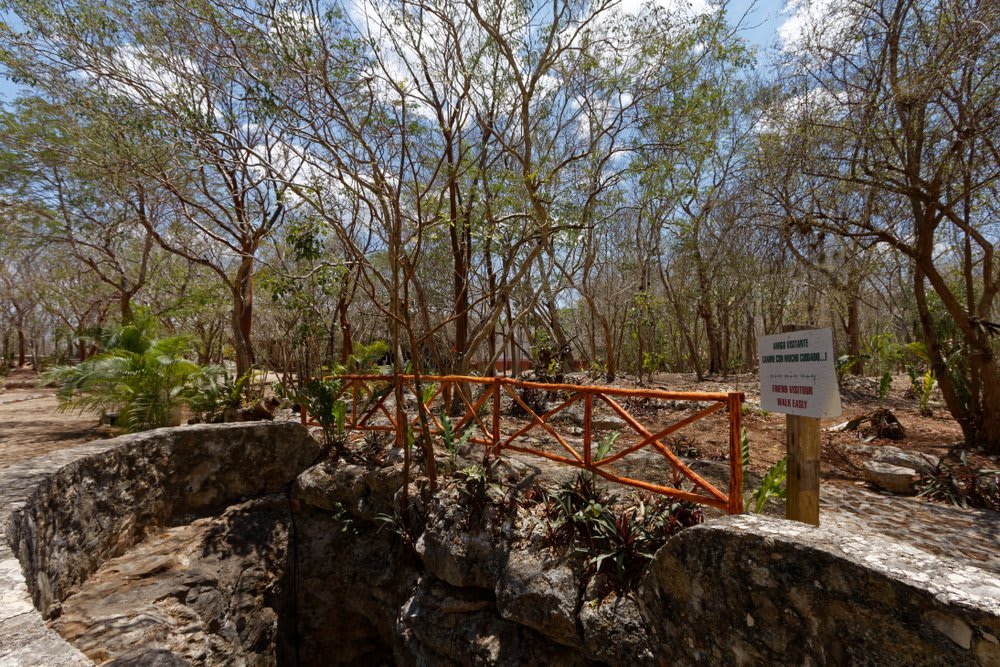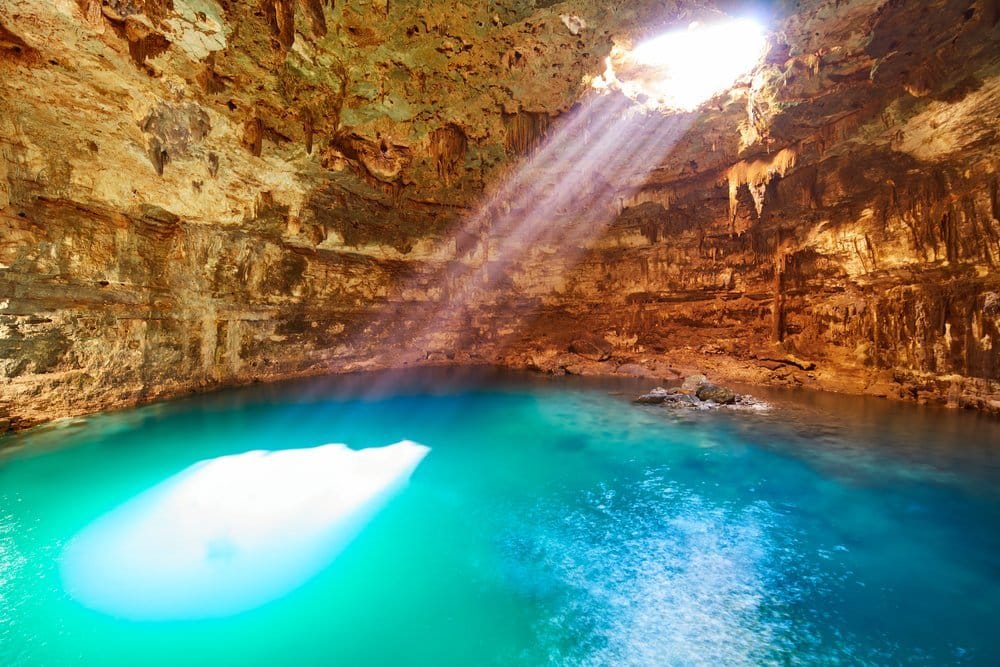
Cenote Suytun Adventure Guide: A Thrill-Seeker’s Paradise
Welcome to Cenote Suytun, a mesmerizing natural wonder that captivates with its crystalline waters and ancient allure.
Nestled amidst the lush jungle canopy, this cenote stands as a testament to the region’s rich geological history and mystical charm.
For adventurers craving an exhilarating escapade off the beaten path, Cenote Suytun offers an unparalleled experience.
From the moment you step foot into its mystical realm, you’re transported to a world where time seems to stand still, and the wonders of nature unfold before your eyes.
Join me today as I take you on a virtual journey to uncover the secrets of Cenote Suytun, delving into its depths, exploring its hidden corners, and embracing the thrill of discovery.
Although I have already talked about this Cenote in another article (Top Valladolid Cenotes), I had some followers ask me for more details about it. So here it is!
How to get to Cenote Suytun
Cenote Suytun is almost 10 km from Valladolid, about 15 minutes drive on Highway 180 Cancun “libre.”
At km 8, you must take the direction to Tikuch, and a few meters ahead, you will find the welcome sign to the cenote. You can leave your car in the parking lot for free.
Cenote Suytun is one of the mandatory stops on the way to the ruins of Chichen Itza or Ek Balam.
Once you have visited Suytun, you can continue along the road and visit other cenotes further away, such as the Agua Dulce, Palomitas, or Sac aua cenote.
If you are traveling from Playa del Carmen, the trip will take approximately 1:45 hours if you take the toll road or a little more than 2 hours if you take the “libre” road to Tulum.
Cenote Suytun history

As you may know, the Yucatan Peninsula is blessed with many natural wonders, including beaches, the turquoise water of the Caribbean Sea, and cenotes in the jungle.
One of them, of course, is the cenote Suytun!
If you have never heard of cenotes before, these are beautiful natural “pools” where magic mixes with nature to create one of the most mysterious and symbolic sites in the entire Yucatan Peninsula.
According to history, the cenotes were formed some 66 million years ago, when a meteorite hit Chicxulub, in the Yucatan Peninsula.
Technically, they are water wells, some very deep, fed by river currents and rain filtration, which is why their waters tend to be quite cold.
Cenotes are known by this name because of the word Dz’onot, which in Maya means “cavern with water.”
Theoretically, large, deep depressions were formed under the earth with the meteorite’s fall.
Subsequently, these hollows were flooded, giving rise to the birth of the cenote.
Types of Cenotes

Cavern cenotes are the youngest and, in general, the most sought after by the thousands of tourists who travel the Yucatan route year after year.
They are characterized by having large water mirrors (emerald or blue, depending on whether the sun illuminates them) inside a cavern.
Check for places to stay near Cenote Suytun
For this reason, the Maya civilization chose to perform some of their ceremonies in these natural settings.
Semi-open cenotes have only one exposed part and are younger than cavern cenotes. Sometimes they are connected to other cenotes and have beautiful crystalline waters.
And finally, the open cenotes, the oldest of all, are found entirely in the open.
One of the most popular is the Sacred Cenote of Chichen Itza.
Why were Cenotes important to the Mayans?
The Mayans had a profound connection with these places.
On the one hand, they represented their primary water source; on the other hand, they considered them the gateway to the underworld.
In some cenotes, gold, jade, copper, and other objects the Maya offered to their gods have even been found in different diving expeditions.
Can you swim in Cenote Suytun?

Yes! Cenote Suytun is one of the best cenotes for swimming due to the crystalline water and the ancient stalactites hanging from the ceiling, a view that will undoubtedly remain engraved in your memory.
Once you arrive at the cenote site, you must go down some stone steps to access the water (just be careful because they are a little slippery).
Day after day, hundreds of tourists come to experience its magic.
This cenote is shallow water (5 meters at its deepest point) perfect for swimming but NOT for diving. It is also mandatory to enter the water with a life jacket.
Remember that the water temperature is quite cold, as in most cenotes, but it will be worth the dip if you dare.
When is the best time to visit Cenote Suytun?
The cenote has artificial lighting so that you can visit it at any time of the day.
However, I recommend going between 12 and 2 pm, when the sunlight enters through the hole and illuminates the place.
That’s when the sun’s rays fall over the stone platform, and everyone arrives intending to take a picture in any spot bathed by the light.
However, if privacy is your thing, you should enjoy the cenote at other times, ideally in the early morning before everyone arrives.
From there you can go for a swim, but, as it is not deep enough, it is not possible to practice scuba diving.
For your convenience, you can stay overnight in one of the cabins connected to the cenote by a path.
If you rent one of them, you will have access to the pool and the resort’s restaurant, and you can visit the cenote any time of the day.
The place has a small museum where pieces of the Mayan culture found inside the cave are exhibited.
Keep in mind that the water in the cenotes is very delicate and easily contaminated, so avoid using body lotion, sunscreen, or mosquito repellent.
In addition, you can enjoy a 20-minute musical and Mayan dance show performed by students from schools in Valladolid.
You should also avoid hanging from the roots and stalactites. Cenotes are unique places on earth that must be properly cared for.
The other Cenote
When you reach the main entrance of the Suytun cenote, you can visit another one known as Ka’pe.
In this case, you will only be able to observe it and take some pictures because bathing is not allowed.
This cenote also consists of a deep hole whose main feature is the vegetation that rises to the surface.
What does Suytun mean?
The name Suytun means “stone center.” There really can be no better name to describe this very special cenote.
Cenote Suytun entrance fees
Entrance to the cenote costs about 350 pesos per person and is open daily. Visiting hours are from 8 am to 5 pm.
The life vest is included in the entrance fee (remember that it is mandatory to wear it to enter the water).
What are other nearby Cenotes?

14 km from Valladolid is the Samulá cenote. It is also a subway cavern of astonishing beauty.
Stalactites, just like in Suytun, are part of its decoration, as well as the turquoise waters that light up when the sun enters the cavern.
The roots of the trees surrounding the cenote’s entrance fall downward, giving the place a special touch.
When you enter the cenote, you will find a first level from where you can appreciate the magnitude of the place and then descend wooden stairs to the second level.
If you have no problem with the water temperature, you can take a dip.
Cenote Xkeken, also near Valladolid, is similar to the previous ones, but you should not miss it.
The cenote is located in a subway cavern, pierced by the sun through a small natural entrance in the highest part of the vault.
The entrance to the cenote is relatively narrow, and you descend to reach it through some stairs that end in a square from which you access the place.
The water is shallow and crystal clear; if you get a little closer, you will see a lot of fish.
I hope you enjoyed the tour of the Suytun cenote and others like it. Remember to visit it if you travel to Yucatan; you won’t regret it.
Also, spread the word and share this article with your folks. Until next time!